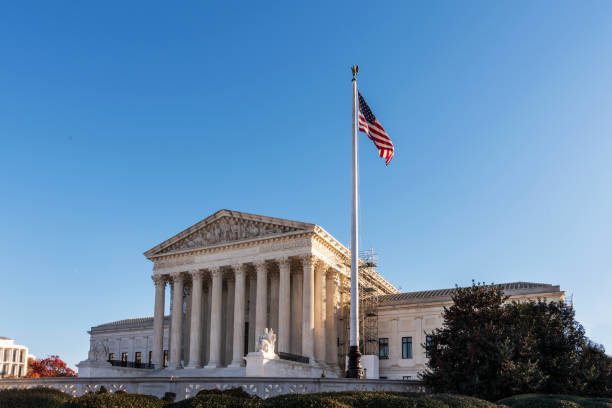Summary
The Federal Supremacy Clause is found in Article VI, Clause 2 of the United States Constitution. It establishes that the Constitution, federal laws, and treaties made under its authority are the supreme law of the land, overriding any conflicting state laws.
Here’s the exact wording:
“This Constitution, and the Laws of the United States which shall be made in Pursuance thereof; and all Treaties made, or which shall be made, under the Authority of the United States, shall be the supreme Law of the Land; and the Judges in every State shall be bound thereby, any Thing in the Constitution or Laws of any State to the Contrary notwithstanding.”
Key Points:
Federal Law Overrides State Law
If a state Law conflicts with a valid federal Law, the federal Law prevails.
Binding on State Judges: State courts must uphold federal Law, even if state laws or constitutions conflict with it.
Limits on State Sovereignty
States cannot pass laws that undermine federal authority in areas where Congress has constitutional power.
Example:
If Congress passes a Law regulating interstate commerce, and a state passes a Law that contradicts it, the federal Law takes precedence. This principle was reinforced in cases like McCulloch v. Maryland (1819), in which the Supreme Court ruled that states cannot tax federal institutions, thereby affirming federal supremacy.
Here are some landmark Supreme Court cases that have shaped the interpretation and application of the Supremacy Clause:
1. McCulloch v. Maryland (1819)
- Issue: Could Maryland tax the Second Bank of the United States?Court: . The Court held that the federal government had the constitutional authority to establish the bank and that states could not tax federal institutions.
- Significance: Chief Justice John Marshall famously stated, “the power to tax involves the power to destroy,” reinforcing that federal laws and institutions are supreme over state interference
2. Gibbons v. Ogden (1824)
- Issue: Conflict between a federal license and a New York state-granted monopoly for steamboat operations.
- Ruling: The federal Court ruled that regulating interstate commerce is a federal power.
- Significance: This case affirmed that when state and federal laws conflict in areas like commerce, federal Law prevails under the Supremacy Clause
3. Worcester v. Georgia (1832)
- Issue: Georgia tried to impose its laws on Cherokee lands, despite federal treaties.
- Ruling: The Court sided with Worcester, stating that the federal government—not states—had authority over Native American affairs.
- Significance: Reinforced federal supremacy in treaty enforcement and Native American relations
4 Ableman v. Booth (1858)
- Issue: A Wisconsin court tried to nullify the federal Fugitive Slave Act.
- Ruling: The Supreme Court ruled that state courts cannot override federal Law
- Significance: Strong affirmation that federal Law is binding on state courts
5. Pennsylvania v. Nelson (1956)
- Issue: Pennsylvania prosecuted a man under its sedition Law, despite federal laws covering the same conduct.
- Ruling: The Court found that federal Law preempted the state Law.
- Significance: Clarified the doctrine of preemption, where federal Law displaces conflicting state Law
6. Printz v. United States (1997)
- Issue: Could the federal government compel state officials to enforce federal gun control laws? Courting: No. The Court ruled that the federal government cannot commandeer state officials.
- Significance: While reaffirming federal supremacy, it also highlighted limits under the Tenth Amendment, preserving state sovereignty
Why is the discussion of the supremacy clause important today?
7. Child Labor and Worker Protection Laws
Several states have proposed or enacted laws that weaken child labor protections, directly conflicting with the Fair Labor Standards Act (FLSA):
- Ohio: Proposed legislation would allow 14- and 15-year-olds to work longer hours during the school year than permitted under FLSA
- Florida: A bill sought to eliminate work-hour restrictions for 16- and 17-year-olds and initially proposed allowing 13-year-olds to work during summer, both in violation of federal standards
- Iowa: Passed laws allowing minors to work in hazardous occupations, contradicting federal hazardous occupation orders
These laws are part of a broader trend aligned with Project 2025, aiming to reduce federal oversight and allow states to “opt out” of federal labor standards
8. Climate and Environmental Justice Laws
States like California, New York, and Vermont have enacted aggressive climate laws that are now under federal scrutiny:
- California: Requires large corporations to report greenhouse gas emissions across their supply chains and disclose climate-related financial risk. These laws are being challenged in Court on the grounds of alleged federal preemption and constitutional violations.
- New York & Vermont: Passed Climate Superfund Acts that hold fossil fuel companies financially liable for climate-related damages. These laws apply retroactive liability and are being challenged by industry groups and state attorneys general.
An Executive Order issued in April 2025 directs the U.S. Attorney General to challenge such state laws as potentially unconstitutional or preempted by federal energy policy.
9. Marijuana Legalization
- Recreational and medical marijuana is legal in many states (e.g., California, Colorado), but remains illegal under federal Law (Controlled Substances Act).
- While federal enforcement has been selective, the conflict remains unresolved, and federal Law technically preempts state legalization
10. Sanctuary City Policies
- Cities like San Francisco, Seattle, and New Orleans have adopted policies limiting cooperation with federal immigration enforcement.
- These policies conflict with federal immigration Law and have been subject to legal challenges, though courts have often upheld local discretion in enforcement priorities.
These examples demonstrate how states continue to push boundaries in areas such as labor, climate, and civil liberties, often prompting federal legal challenges. Would you like a chart summarizing these conflicts or a more in-depth exploration of climate Law or labor standards?
